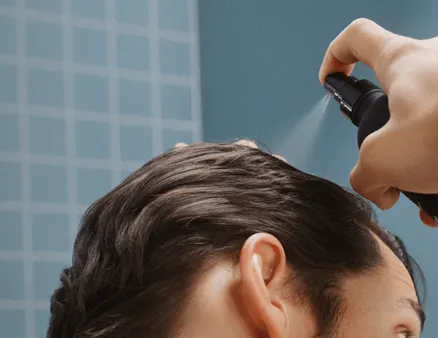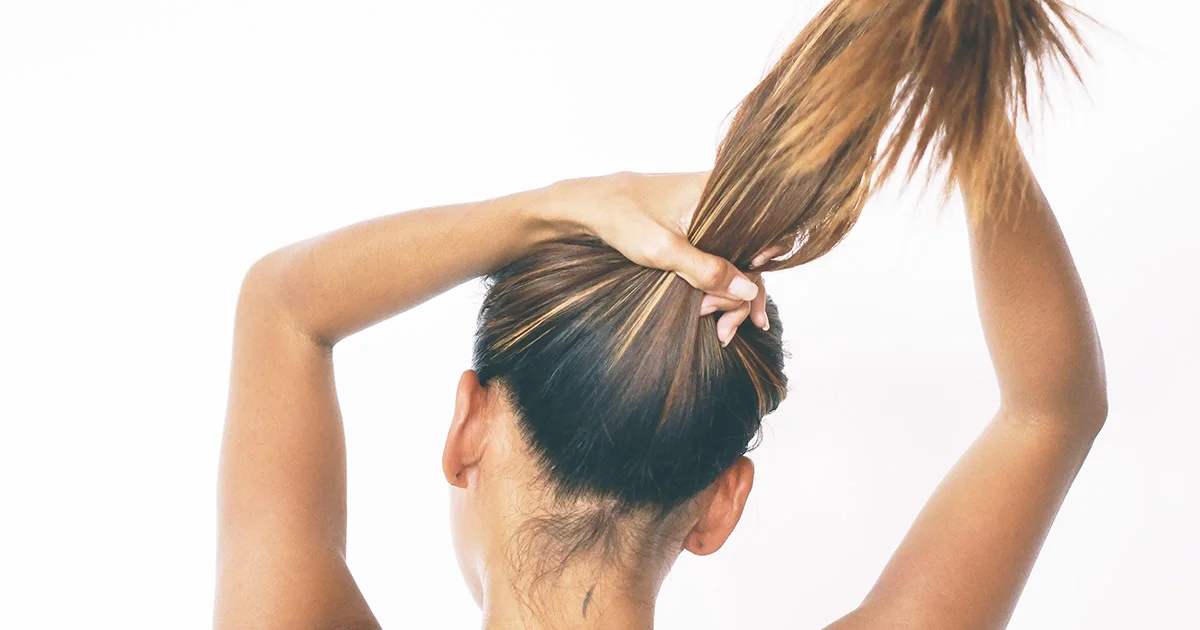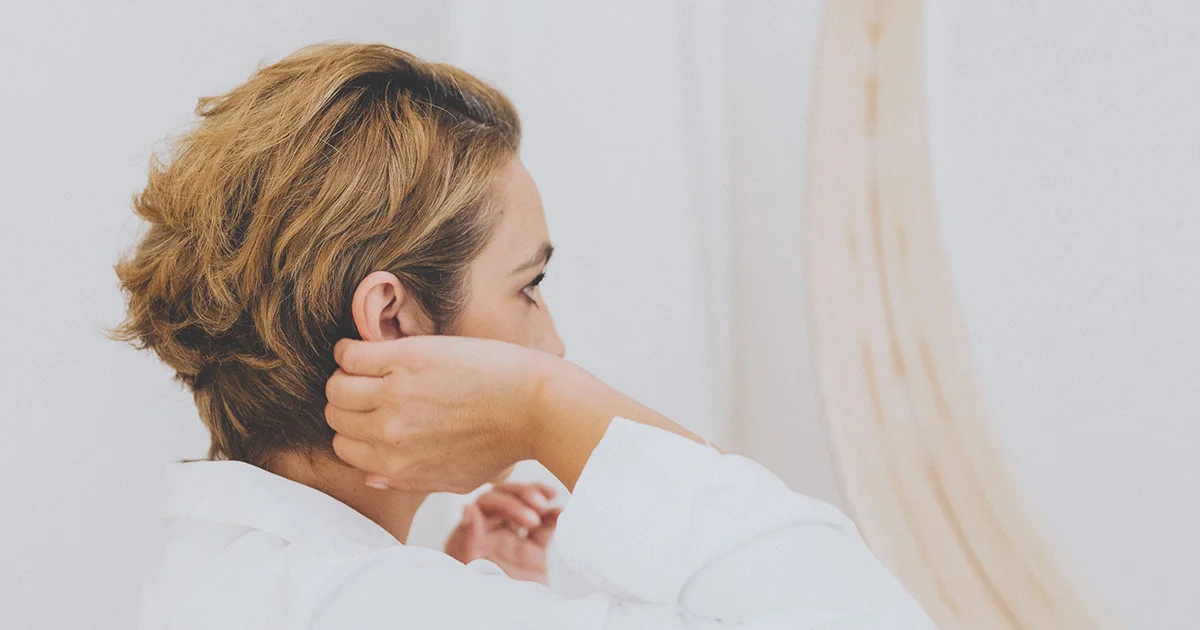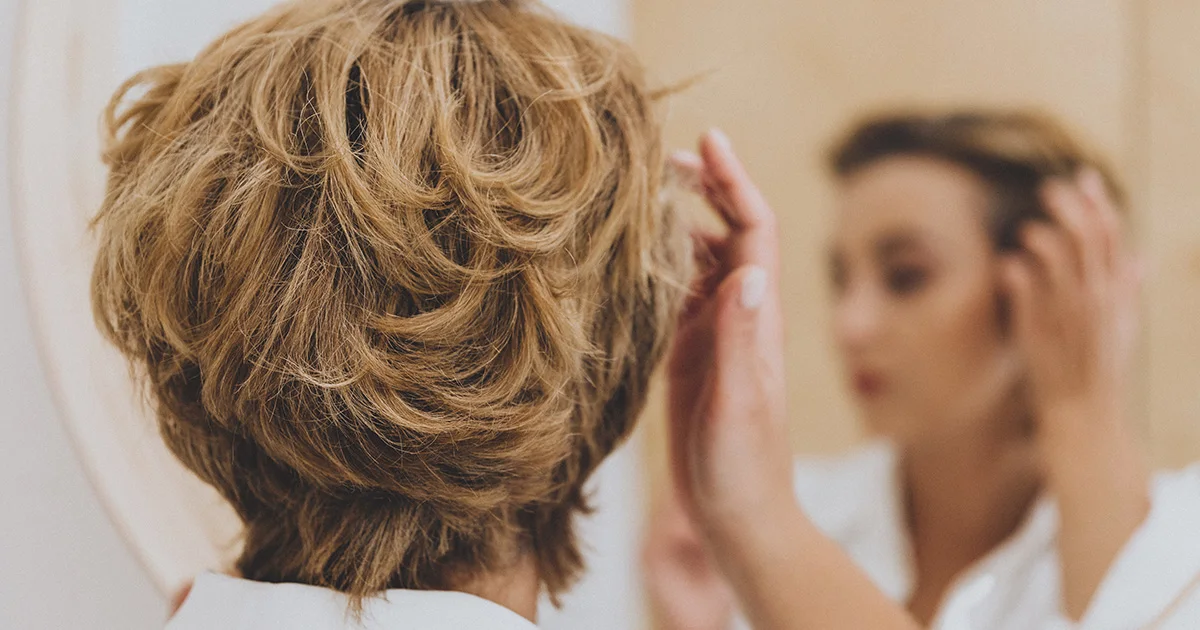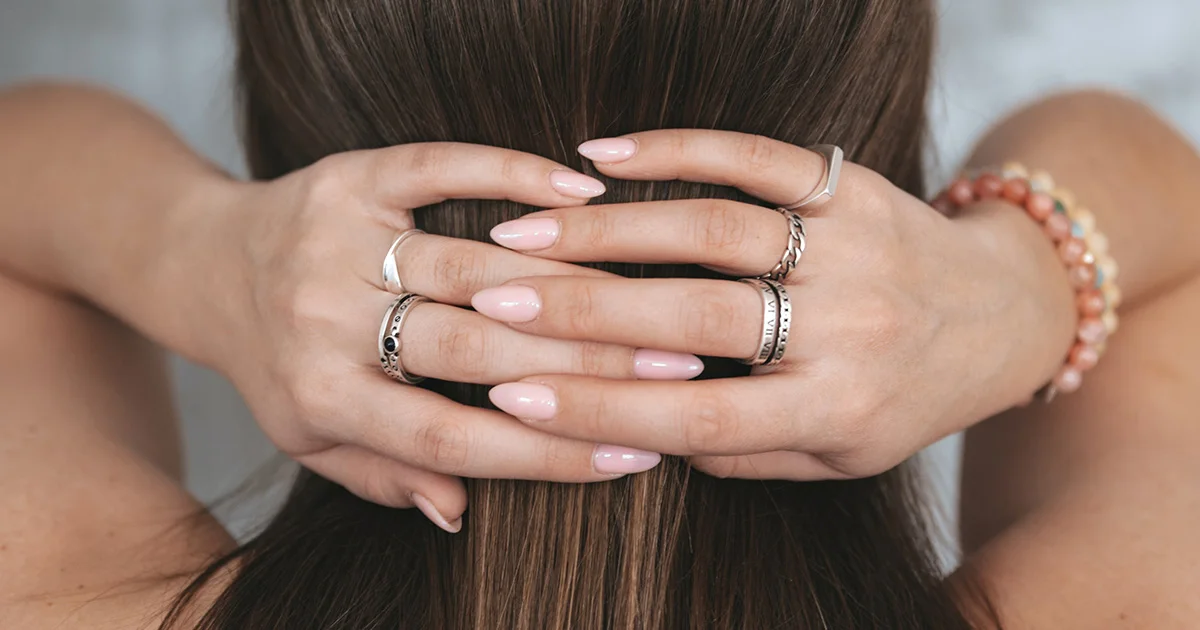Here's what we'll cover
Here's what we'll cover
If you haven’t heard of minoxidil, you’ve likely heard of the brand name version Rogaine.
You might be familiar with Rogaine as a hair loss treatment, but minoxidil was originally used as an oral medication to treat high blood pressure. During testing, researchers stumbled upon an unexpected side effect: hair growth. Minoxidil comes as a topical solution for hair regrowth that’s rubbed on the scalp (Suchonwanit, 2019).
If you’re trying out minoxidil for hair loss, here’s what you need to know about side effects and how the treatment works.
Side effects of minoxidil
It’s possible to experience side effects from minoxidil, but it’s rare. That’s because only about 2% of minoxidil is absorbed when applied to unbroken skin, making adverse reactions uncommon.
If you do see side effects, they’re usually mild and may include (Suchonwanit, 2019; FDA, n.d.):
Itching and irritation at the application site
Signs of an allergic reaction (rash, hives, or difficulty breathing)
Facial or body hair growth in areas other than the application site (this usually occurs if the medication isn't washed off thoroughly and is more common with the higher 5% dose than the 2% formulation) (Suchonwanit, 2019).
Changes in hair color or texture
To minimize these side effects, don’t use minoxidil more than directed, and wash your hands after using the product, so you don’t transfer it to other areas of your body.
It's also worth noting that people may notice more hair loss when first beginning treatment, a phenomenon called minoxidil shedding. There's no need to panic if this happens: minoxidil shifts what phase your hair follicles are in, which may cause some initial shedding before hair regrowth begins. The hair shedding resolves as you continue to use the medication (Badri, 2021).
What is minoxidil?
Like Rogaine, the generic version minoxidil is available over-the-counter. It’s approved by the U.S. Food and Drug Administration (FDA) to treat androgenic alopecia, more commonly referred to as male or female pattern baldness.
Sold as a topical solution or foam, minoxidil comes at two different strengths (2% and 5%). It’s been shown to encourage hair growth and prevent further loss. Minoxidil is FDA-approved for use in women in two forms: a 2% topical solution and a 5% topical foam. Men can use the 5% topical solution or foam; the 5% topical solution is not approved for women.
How does it work?
It's not entirely understood how minoxidil helps with hair loss, but researchers suspect it has to do with blood flow. The medication is called a vasodilator, which opens up blood vessels and improves blood flow. By applying minoxidil directly to the scalp, it might increase blood flow to the hair follicle, possibly stimulating growth.
Early studies found that roughly 40% of men using 5% minoxidil and 22% who used the 2% solution achieved moderate to dense hair regrowth. Applied twice a day, the 5% solution works more quickly than the lower concentration (Olsen, 2002).
Drug interactions
When minoxidil is used topically on intact skin, it typically does not interfere with any known drugs that are taken orally. That said, it's still worth mentioning all the medications you take when talking with your healthcare provider.
Speak to a medical expert before starting minoxidil if you have an existing condition like heart disease.
How to use minoxidil
To see results, minoxidil needs to be used as directed. While the medication does start working right away, it can take up to four months to see any results.
Minoxidil solution or foam is typically applied twice a day. Avoid anything touching or rubbing the application site afterwards. It can be helpful to apply it 2-4 hours before bed to ensure it dries fully. Don’t apply extra during your next application if you miss a dose. Reminders may be helpful to prevent skipping an application. Make sure to wash your hands immediately afterward to prevent the minoxidil from spreading to other parts of the body.
Warnings and risks
Although rare, serious side effects have been reported. Before starting minoxidil, talk to your healthcare provider—especially if you have issues with your heart or high blood pressure. If you experience chest pain, rapid heartbeat, faintness, dizziness, sudden unexplained weight gain, or hand or foot swelling while using minoxidil, seek medical attention.
Topical hair loss products like Rogaine shouldn’t be used by people younger than 18. Women who are pregnant or plan to become pregnant should avoid using minoxidil. Traces of minoxidil can pass into breast milk, so breastfeeding women should also avoid minoxidil (Dinh, 2007; LactMed, 2018). Talk to your healthcare provider if you have any questions or concerns about the side effects or safety considerations of this popular hair regrowth treatment.
DISCLAIMER
If you have any medical questions or concerns, please talk to your healthcare provider. The articles on Health Guide are underpinned by peer-reviewed research and information drawn from medical societies and governmental agencies. However, they are not a substitute for professional medical advice, diagnosis, or treatment.
Badri, T., Nessel, T. A., & Kumar, D. D. (2021). Minoxidil. [Updated Apr 13, 2021]. In: StatPearls [Internet]. Retrieved on Sep. 14, 2021 from https://www.ncbi.nlm.nih.gov/books/NBK482378/
Dinh, Q., & Sinclair, R. (2007). Female pattern hair loss: Current treatment concepts. Clinical Interventions in Aging, 2(2). 189–199. Retrieved from https://www.ncbi.nlm.nih.gov/pmc/articles/PMC2684510/
Drugs and Lactation Database (LactMed). (2018). Minoxidil. Bethesda (MD): National Library of Medicine (US). Retrieved from https://www.ncbi.nlm.nih.gov/books/NBK501032/
Food and Drug Administration (FDA). Women’s Rogaine 2% Minoxidil topical solution. Drug Label. Retrieved from: https://www.accessdata.fda.gov/drugsatfda_docs/label/2015/019501Orig1s029lbl.pdf
Friedman, E. S., Friedman, P. M., Cohen, D. E., & Washenik, K. (2002). Allergic contact dermatitis to topical minoxidil solution: Etiology and treatment. Journal of the American Academy of Dermatology, 46 (2), 309-312. doi:10.1067/mjd.2002.119104. Retrieved from https://www.jaad.org/article/S0190-9622(02)41006-7/fulltext
Lucky, A. W., Piacquadio, D. J., Ditre, C. M., Dunlap, F., Kantor, I., Pandya, A. G., . . . Tharp, M. D. (2004). A randomized, placebo-controlled trial of 5% and 2% topical minoxidil solutions in the treatment of female pattern hair loss. Journal of the American Academy of Dermatology, 50 (4), 541-553. doi:10.1016/j.jaad.2003.06.014. Retrieved from https://pubmed.ncbi.nlm.nih.gov/15034503/
Olsen, E. A., Dunlap, F. E., Funicella, T., Koperski, J. A., Swinehart, J. M., Tschen, E. H., & Trancik, R. J. (2002). A randomized clinical trial of 5% topical minoxidil versus 2% topical minoxidil and placebo in the treatment of androgenetic alopecia in men. Journal of the American Academy of Dermatology, 47 (3), 377-385. doi:10.1067/mjd.2002.124088. Retrieved from https://www.jaad.org/article/S0190-9622(02)00124-X/abstract
Suchonwanit, P., Thammarucha, S., & Leerunyakul, K. (2019). Minoxidil and Its Use in Hair Disorders: A Review [Corrigendum]. Drug Design, Development and Therapy, 13, 2777-2786. doi:10.2147/dddt.s247601. Retrieved from https://www.dovepress.com/corrigendum-minoxidil-and-its-use-in-hair-disord-peer-reviewed-article-DDDT
UpToDate – Minoxidil (topical): Drug Information (n.d.). Retrieved on August 27, 2020, from https://www.uptodate.com/contents/minoxidil-topical-drug-information?search=hair%20loss%20in%20women&topicRef=12254&source=see_link
